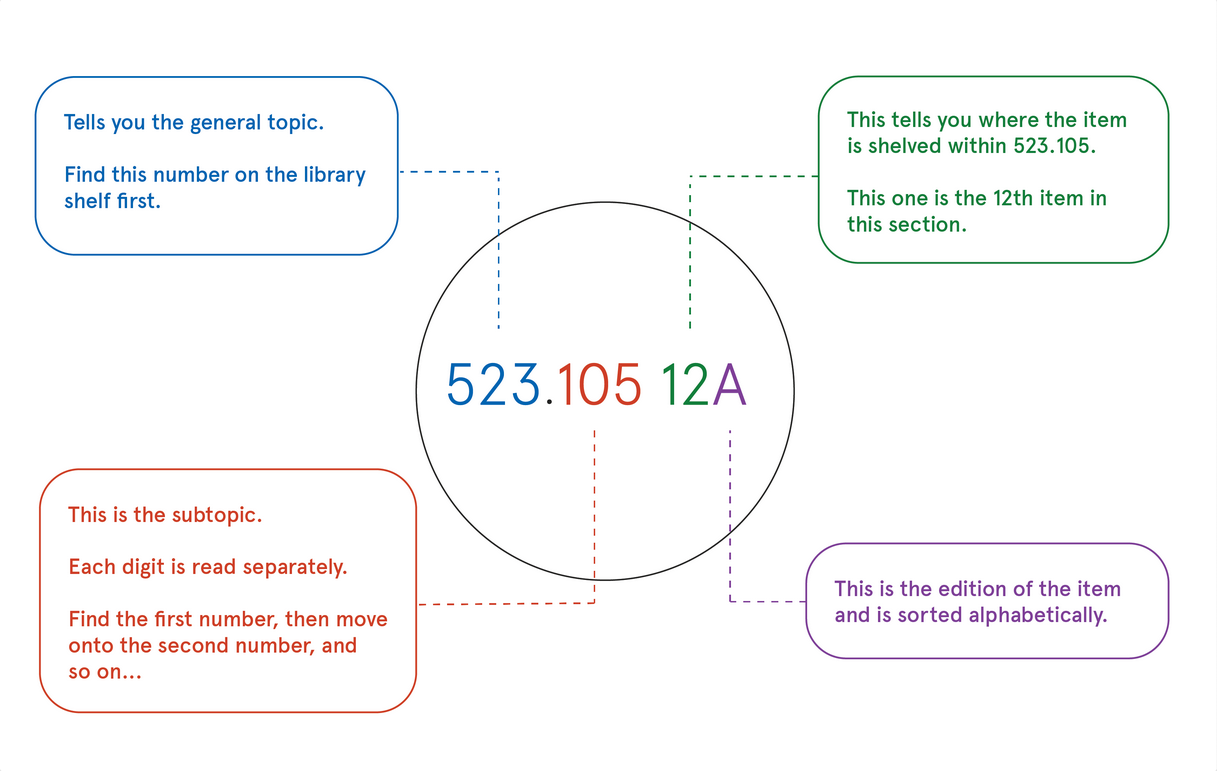Find that book
Every book in the library has a number on its spine describing where it is.
This is the "call number" and it can be broken down into the following parts.

Every book in the library has a number on its spine describing where it is.
This is the "call number" and it can be broken down into the following parts.

Every book in the library has a number on its spine describing where it is.
This is the "call number" and it can be broken down into the following parts.
The first part of the call number that appears before the decimal point and is treated as a whole number. This number represents a general topic area. Find this number on the library shelf first.
The second part of the call number that appears after the decimal point and represents the subtopic. Each digit in this number is read separately. Find the first number, then move onto the second number, and so on.
A space appears next to separate the next number.
The next number (called the Shelf list) tells you where the item is shelved within 523.105. In this example, this book is the 12th item in this section.
If you see a letter after the shelf list number. This tells you the edition of the item and is sorted alphabetically. So, “A” comes first.